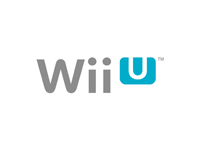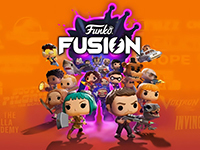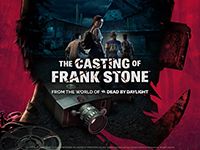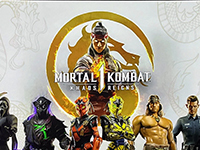
While the name may not be revolutionary, many of the features of both the new console and its unique controller may have you clamoring for this next release. I’ll put a section at the bottom of the article for all the hardware specifics – mainly because you can read that on any boring site. Let’s get into what it felt like to pick up the tablet/controller and play some games tech demos.
|
|
It’s true, all Nintendo had to share were tech demos, but they had a really nice selection to help you understand the different aspects of the new system and the interaction with the tablet/controller. Okay, before we go further, I’m going to go ahead and name the controller now – the Wiiblet. Anyway, there were about seven different demos for us to try and I got hands onto five of them.
Of the two I did not look at, one was the “Hummingbird in HD” and the other was New Super Mario Bros. Wii with Miis. I didn’t bother with the latter since I’ve already beaten the game and Mii support isn’t revolutionary – although I will say that it explains the inclusion in the original release of the two toads for the third and fourth players. Nintendo was planning this all along. As for the hummingbird, David covered it and said “[David type something in here as a quote].”
|
|
The first demo I tried out was focused on the Wiiblet’s 6.2” touch screen. This application was a head-to-head contest where the game gives you instructions and then grades you on your execution. Examples include: draw a line that is one-and-one-half inches long, draw a sixty degree angle or draw a circle two inches in diameter. There are seven rounds and scores are added up at the end. The touch screen and the system were both very responsive to my touch, though after the DS lifecycle, I can’t imagine how it couldn’t be. You will definitely be seeing these included in a Brain Age or it will be Big Brain Academy Wii U™niversity Edition.
The next demo was probably my favorite. This game focused on the gyroscope aspect of Wiiblet and its coordination with both the mini-screen and the television. Avast me mates, we’re under attack by pirates. The absolute cutest pirates you’ve ever seen (yes, cuter than veggietales). The pirates are shooting plunger arrows at you and you must defend yourself with your Wiiblet. The arrows come at you from three ships with the center ship shooting straight at you and from above. If the center is straight ahead, with you holding the Wiiblet perpendicular to the floor, arms out in front of you, then over (from above) is 45 degrees tilted up, right and left are a torso-twist 45 degrees to the respective side. The shots are announced to you per round and are done to a beat in rhythm. Shaking the Wiiblet down so that it’s parallel to the floor shakes off arrows caught at the end of each round. I’m telling you all this to give you perspective as I explain how the gyroscope’s movements worked brilliantly with the view in the touch screen such that turning left or right to see the other ships changed my view as well when I shook the arrows off, I was looking down at the deck of my ship. All this occurred while the pirates on the main ship were still on the television, advising the next attack. The game ended and graded me on my performance. While I got an ‘A’ for enthusiasm and accuracy, my rhythm grade of ‘C’ left something to be desired. All was not for naught, as the demonstrator from Nintendo told me that my rhythm grade was higher than rapper T-Pain’s rhythm grade of ‘D’ when he played the night prior.
|
|
The next two demos were very similar in that they highlighted one player playing on the Wiiblet while the rest of the players using Wiimotes were playing cooperatively on the television. Remember four or five E3s ago when Nintendo tried to push the connectivity between the Gamecube and the Game Boy Advance with the Pac-Man game? This was very much like that. While it was fun to have that party game setting, and I’m sure it’ll be a big feature in the next Mario Party, it felt more gimmicky and strongly reminded me it was only a tech demo.
|
|
Lastly, I saw what looked like a recorded section of Legend of Zelda: Skyward Sword. This demo was focused on the ability to play on the television with your inventory on the Wiiblet’s screen, then switch so that you’re playing on the handheld device so that someone else could watch on the television. The technology itself is sweet and the picture looked gorgeous.
|
|
There is no doubt in my mind that Nintendo really stepped up on the technology side with the Wii U. The controller looks great and feels incredibly light in your hands, without feeling cheap. This really bridges the gap for the traditional, two-analog sticks and eight buttons gamer. That said, HD graphics and a new controller that’s basically a tablet makes me wonder about what price point Nintendo plans to put this console at for launch. Nothing has been announced as of yet other than you can expect this to hit store shelves in 2012.
|
|
|
|
...Now for the dry technology information*...
| Console | Controller |
|---|---|
|
The new controller incorporates a 6.2-inch, 16:9 touch screen and traditional button controls, including two analog Circle Pads. This combination removes the traditional barriers between games, players and the TV by creating a second window into the video game world. The rechargeable controller includes a Power button, Home button, +Control Pad, A/B/X/Y buttons, L/R buttons and ZL/ZR buttons. It includes a built-in accelerometer and gyroscope, rumble feature, camera, a microphone, stereo speakers, a sensor strip and a stylus. |
* - As always, this information can change at any time.














































